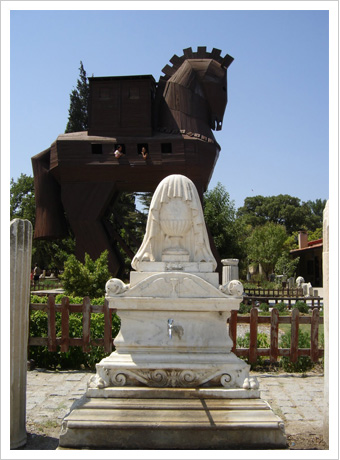The ancient city of Troy, famous as the site of Trojan War that Homer described in his epic poem The Iliad, was inscribed to the UNESCO World Heritage List in 1998.
With its four thousand year history, it is one of the most famous archaeological sites of the world. It is located on the lower slopes of the Mount Ida of antiquity, within the boundaries of Canakkale province.
First mention of Troy was made by Homer in his epic poem The Iliad, where it is the ancient site of the Trojan War.
According to the Trojan Legend, the sea goddess Thetys and the titan of Atlantic Sea Oceanus had a daughter called Electra. Electra would become Zeus's wife and would give birth to Dardanus. Dardanus would found the city of Dardania. Dardanus's son Tros died in the Turas lands, and Darnanus's grandson llus founded the city of Troy. Close by Mount Ida was the site of the infamous beauty contest that gave rise to the Trojan War. The three beauties of the contest were Hera, Athena and Aphrodite, and the judge was Paris. Paris chose Aphrodite, as Aphrodite promised Paris the love of Helen of Sparta, wife of king Menelaus. Paris abducted Helen and took her to Troy, provoking the war.
Troy is known to have 9 archaeological layers, and, to date, house foundations, theatres, a sewage system indicating quite advanced technology, public bath houses, and various artefacts have been found date in the various layers.
According to the excavations in Troy, the city was founded and devastated several times in its history. Consequently, layers of settlement marked 1 to 9 can be seen simultaneously.
The Trojans replaced the Sardis satrapy of the Achaemenid Empire, and ruled Anatolia for 505 years until the Lydian King Candaules s reign (735-718 BC).
Archaeologist Schllemann's excavations, starting In 1871, unearthed 9 ruins of ancient cities and 42 dwellings, and King Priam's Treasure was also found during those excavations.
Troy is waiting for those who would like to trace the stories of ancient cultures. |
|
 |






